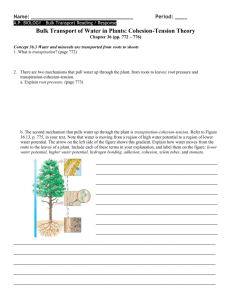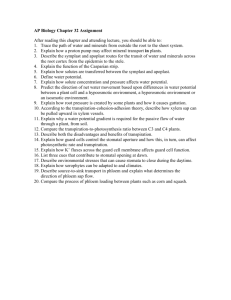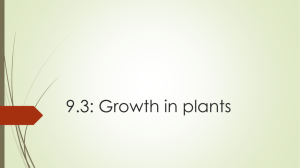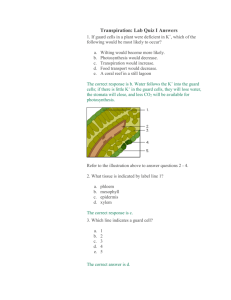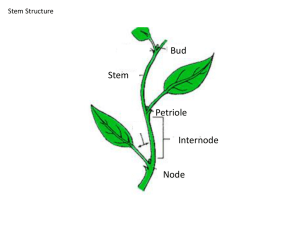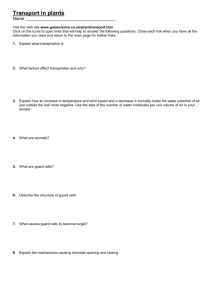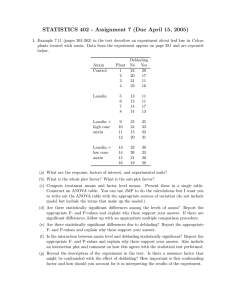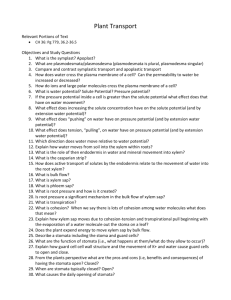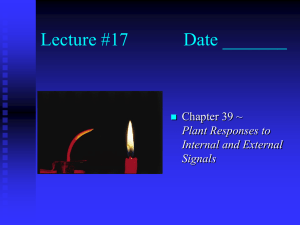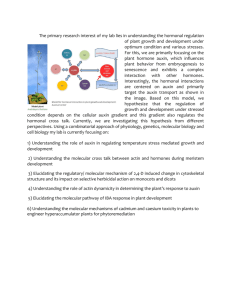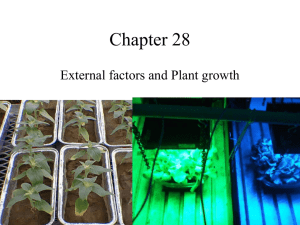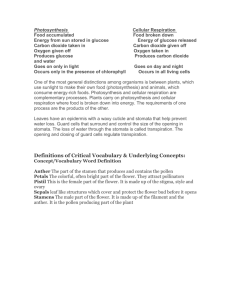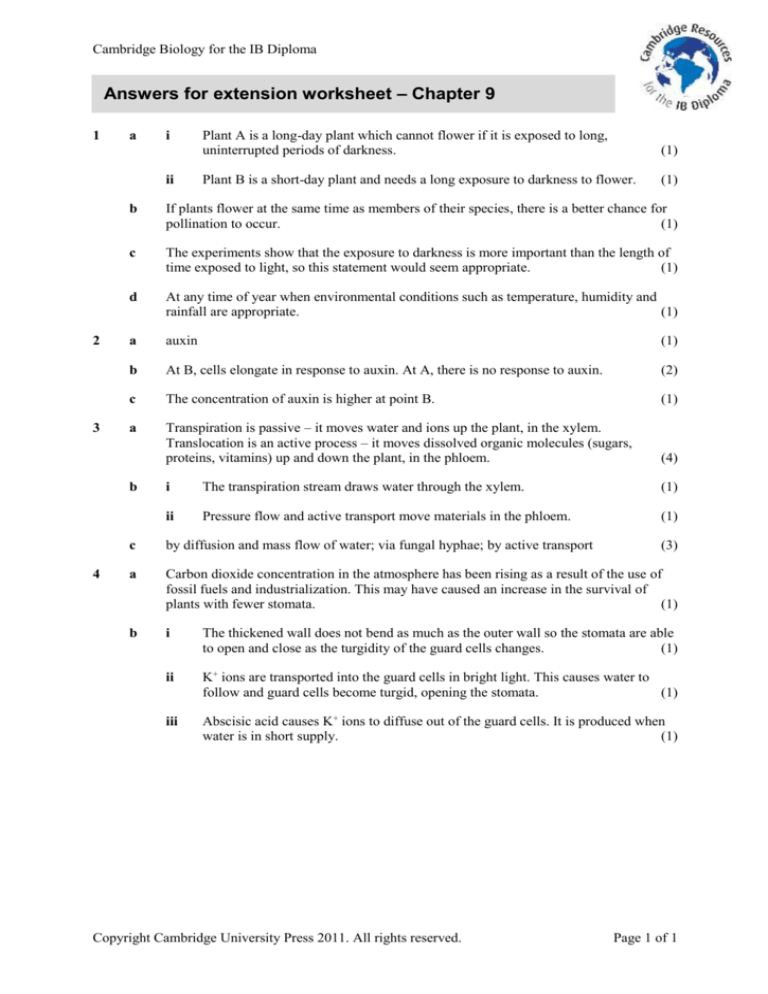
Cambridge Biology for the IB Diploma
Answers for extension worksheet – Chapter 9
1
a
i
ii
2
3
(1)
Plant B is a short-day plant and needs a long exposure to darkness to flower.
(1)
b
If plants flower at the same time as members of their species, there is a better chance for
pollination to occur.
(1)
c
The experiments show that the exposure to darkness is more important than the length of
time exposed to light, so this statement would seem appropriate.
(1)
d
At any time of year when environmental conditions such as temperature, humidity and
rainfall are appropriate.
(1)
a
auxin
(1)
b
At B, cells elongate in response to auxin. At A, there is no response to auxin.
(2)
c
The concentration of auxin is higher at point B.
(1)
a
Transpiration is passive – it moves water and ions up the plant, in the xylem.
Translocation is an active process – it moves dissolved organic molecules (sugars,
proteins, vitamins) up and down the plant, in the phloem.
(4)
i
The transpiration stream draws water through the xylem.
(1)
ii
Pressure flow and active transport move materials in the phloem.
(1)
b
4
Plant A is a long-day plant which cannot flower if it is exposed to long,
uninterrupted periods of darkness.
c
by diffusion and mass flow of water; via fungal hyphae; by active transport
a
Carbon dioxide concentration in the atmosphere has been rising as a result of the use of
fossil fuels and industrialization. This may have caused an increase in the survival of
plants with fewer stomata.
(1)
b
i
The thickened wall does not bend as much as the outer wall so the stomata are able
to open and close as the turgidity of the guard cells changes.
(1)
ii
K+ ions are transported into the guard cells in bright light. This causes water to
follow and guard cells become turgid, opening the stomata.
(1)
iii
Abscisic acid causes K+ ions to diffuse out of the guard cells. It is produced when
water is in short supply.
(1)
Copyright Cambridge University Press 2011. All rights reserved.
(3)
Page 1 of 1

